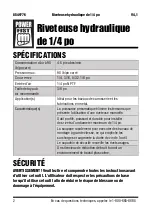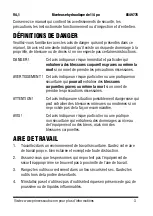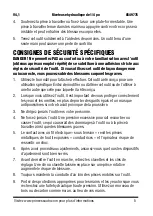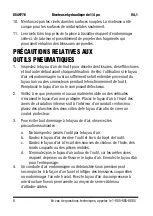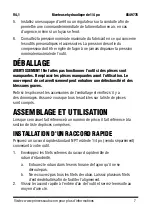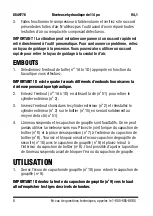
V 4.1
1/4 in. Air Hydraulic Riveter
8549776
Visit www.princessauto.com for more information
11
the back of the wrench gauge (#50) should rest on the beginning of the
outer cylinder (#2) threads, while the front of the wrench gauge (#50)
should rest on the front edge of the jaw case (#3). If the distance from the
head of the jaw case (#3) to the mounting threads do not line up, tighten or
loosen the jaw case (#3) until the distance has been adjusted.
7. Before reassembling, use the wrench gauge (#50) to secure the lock nut
(#14) against the jaw case assembly.
STROKE-FINE TUNING
When using less than 1/4 in. rivets, adjust the long stroke by 1~2 mm to
improve performance.
1. Use the wrench (#51) to dismantle the outer cylinder (#2), then use the
wrench gauge (#51) and wrench (#50) to loosen the front jaw case (#3) and
jaw cylinder (#13).
2. Adjust the lock nut (#14) to move it forward and lengthen the stroke. Use
both wrenches to tighten the locknut (#14) and secure the jaw case (#3)
and jaw cylinder (#13).
3. Reinsert the outer cylinder (#2) and secure with the wrench (#51).
STORAGE
Keep the tool and its accessories in a clean, dry location and out of the reach
of children.
DISPOSAL
Recycle a tool damaged beyond repair at the appropriate facility.
Contact your local municipality for a list of disposal facilities or by-laws for
electronic devices, batteries, oil or other toxic liquids.
DISPOSAL OF HYDRAULIC FLUID
Do not drain hydraulic oil into the sewer system or dispose in an uncontrolled
location. Hydraulic fluid may take up to a year to breakdown in the environment
and the ingredients may still be toxic. Contact your local municipality for proper
disposal instructions or locations.


















